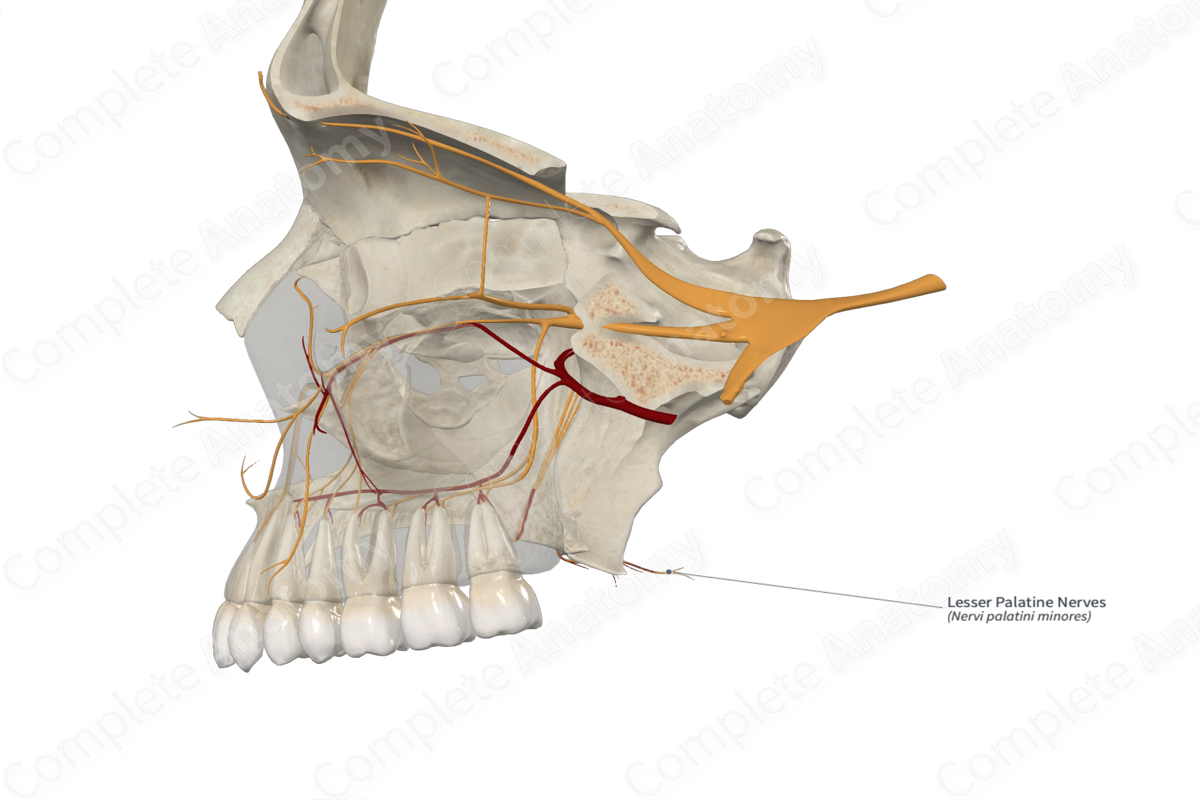
Quick Facts
Origin: Pterygopalatine ganglion.
Course: Run inferiorly through the greater palatine canal and then the lesser palatine canal, exiting onto the palatine bone and soft palate via the lesser palatine foramen.
Branches: None.
Supply: Sensory: convey general sensation from the mucosa of the soft palate, uvula, and palatine tonsil: Parasympathetic: innervation to mucosal glands of the same territories.
Related parts of the anatomy
Origin
The lesser palatine nerves originate as branches of the maxillary nerve. They are typically two to three in number and branch off the pterygopalatine ganglion.
Course
From their origin, the lesser palatine nerves run inferiorly together through the greater palatine canal. The greater palatine canal splits with the lesser palatine nerves continuing down the posterior portion, called the lesser palatine canal. They exit via the lesser palatine foramen onto the posterior portion of the hard palate, then run posteriorly to the soft palate and uvula, and laterally to the palatine tonsil.
Branches
There are no named branches.
Supplied Structures
The lesser palatine nerves are mixed nerves carrying sensory and parasympathetic fibers. The sensory fibers have cell bodies located in the trigeminal ganglion while the parasympathetic fibers originate in the pterygopalatine ganglion.
The sensory fibers convey general sense information from the mucosa of the soft palate and the uvula as well as the mucosa on and near the palatine tonsil.
The parasympathetic fibers innervate the small mucosal glands of the same territories.



